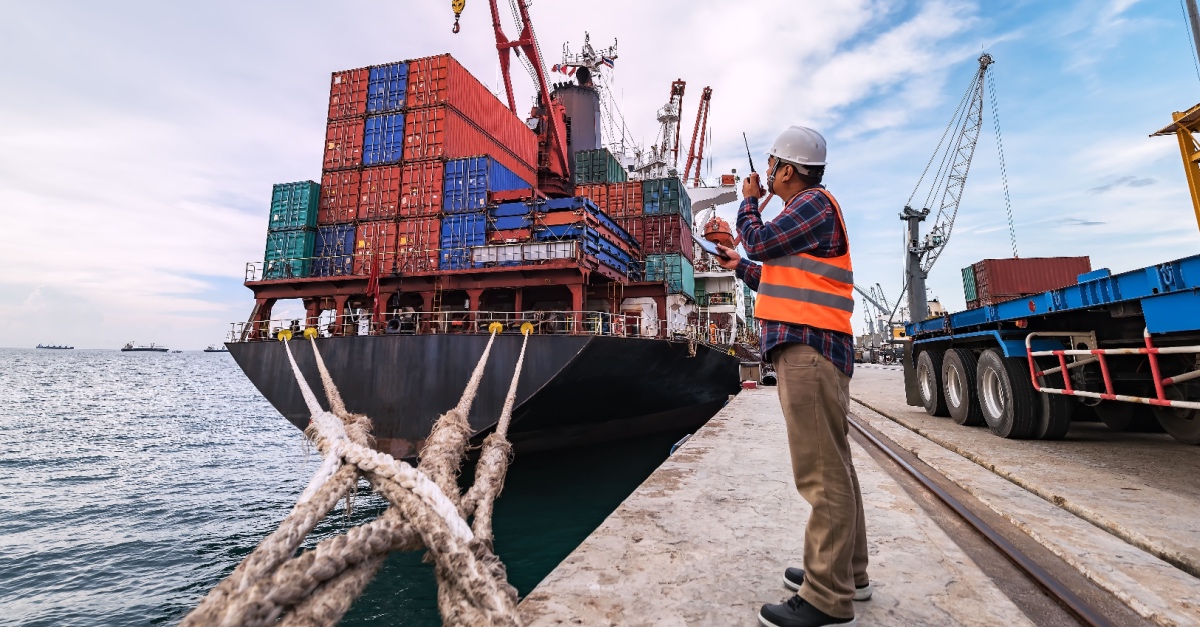
For shippers and union workers at the East and Gulf Coast ports, it was not too long ago when they were staring down the barrel of a potentially devastating strike. Although that was quickly resolved, it is time for déjà vu. With the ILA and USMX at a stalemate, the AAFA has called for a resolution of the stalled contract and welcomes President Trump’s support of the ILA.
As the president-elect prepares to take office, tariffs have become a hot topic, especially for those in the freight world. Port traffic continues to grow as shippers brace themselves for the impact. In this commotion, Maersk has raised hopes of a strong year, believing that 2025 will witness a lot of maritime volume growth even amid the tariffs.
Continue reading to find out more.
The American Apparel & Footwear Association (AAFA) has urged the International Longshoremen’s Association (ILA) and the United States Maritime Alliance (USMX) to resume stalled labor contract negotiations amid the automation battle. Union leaders have expressed concerns about potential job losses, but employers argue that adopting semi-automation is essential to enhancing efficiency and global competitiveness, which they claim will lead to job creation.
After meeting with ILA representatives, President-elect Donald Trump expressed support for the union’s stance against full automation and stressed his commitment to U.S. port development. However, a port strike could result in significant economic disruptions, with losses estimated at $4.5–$7.5 billion weekly. The AAFA welcomed his involvement and encouraged continued dialogue with both parties to finalize a deal ahead of the Jan. 15 contract deadline.
The association also highlighted the importance of resolving the dispute to protect the supply chain, avoid inflationary pressures, and support economic stability.
U.S. containerized imports are projected to rise as retailers aim to avoid disruptions from a potential East and Gulf Coast port strike and possible tariffs under the incoming Trump administration. October imports reached 2.25 million TEUs, a 9.3% increase from the previous year. November and December imports are forecasted to grow 14.4% and 14.3% yearly, respectively.
Port traffic forecasts show continued growth into early 2025, with January imports expected to rise 12% year-over-year. However, February is projected to dip due to Asia’s Lunar New Year factory shutdowns. The Association of American Railroads also reported record intermodal container volumes in November, supporting increased shipping activity.
North American import demand has remained high throughout 2024, with Maersk reporting double-digit growth across the first three quarters. The trend is expected to continue into 2025, driven by e-commerce growth and shippers preparing for potential disruptions, including a possible East and Gulf Coast port strike and tariff measures from the incoming Trump administration.
The ILA strike in October briefly halted operations, and Maersk expects further volatility but remains optimistic about reaching agreements before the January 15 deadline. Container prices have surged by 20% over the past three months, reflecting strong demand and concerns over supply chain disruptions. Despite ongoing challenges, Maersk anticipates robust demand for supply chain services, supported by U.S. GDP growth and active trade with Asia and Mexico.
After meeting with the International Longshoremen’s Association (ILA) President Harold Daggett, president-elect Donald Trump emphasized the importance of prioritizing workers over machinery, criticizing foreign shipping companies for focusing on profits over labor. The United States Maritime Alliance (USMX), representing port employers, defended automation as essential for enhancing safety, efficiency, and capacity. They argue that automation also benefits workers through increased wages tied to port activity.
Contract negotiations between the ILA and USMX stalled in November due to disagreements over automation following a brief strike in October. With a Jan. 15 deadline for a new deal looming, it is unclear whether Trump’s stance will influence the outcome. Critics of the ILA’s position warn that resisting automation could reduce the competitiveness of U.S. ports, while proponents argue it protects jobs and local economies.
Amazon has launched a three million-square-foot warehouse in Shreveport, Louisiana, integrating robotics and artificial intelligence throughout the fulfillment process. Despite the advanced automation, the facility employs over 1,400 workers, with plans to expand to 2,500. Employees handle tasks such as picking items, packing unusual orders, and managing robotic systems, showcasing the limitations of current automation technology.
While robots assist by transporting containers and sorting items, certain tasks, like identifying and handling individual products, remain challenging to automate due to the diversity of items Amazon sells. The facility highlights Amazon’s commitment to improving safety and efficiency while addressing criticism about worker injuries. The company plans to expand this technology to other warehouses next year, aiming to process up to one million orders daily while maintaining a strong human workforce for tasks requiring flexibility and judgment.
The freight world may be volatile, but with the right technological solutions, these problems will not necessarily impact your logistics and supply chain operations. In the face of face potential disruptions and complexities that threaten to cripple operations, a flexible and agile supply chain will prevail.
If you want this, we will leverage technology to provide it for you. With Zengistics, you have:
Zengistics is the smarter option for getting logistics done more efficiently. Connect with us today.